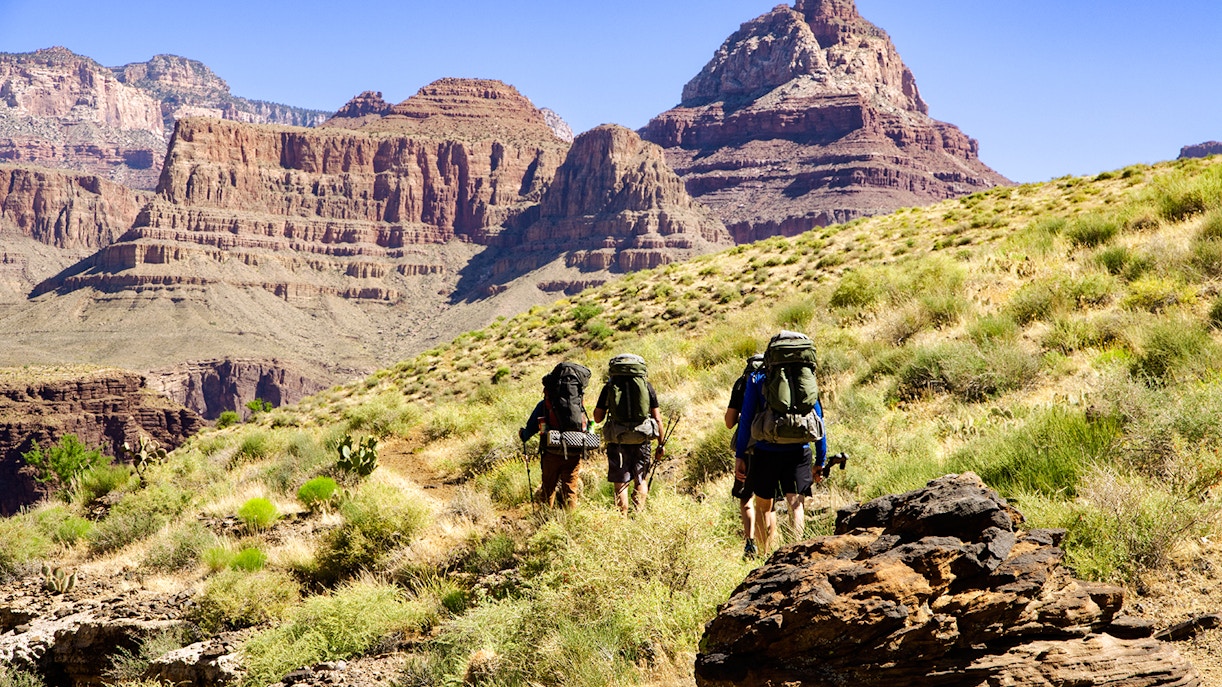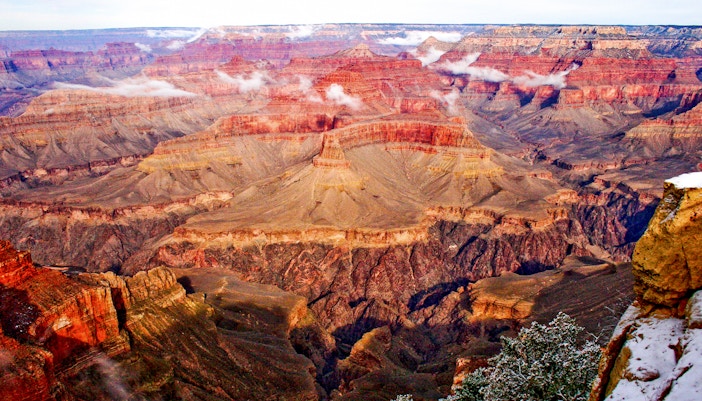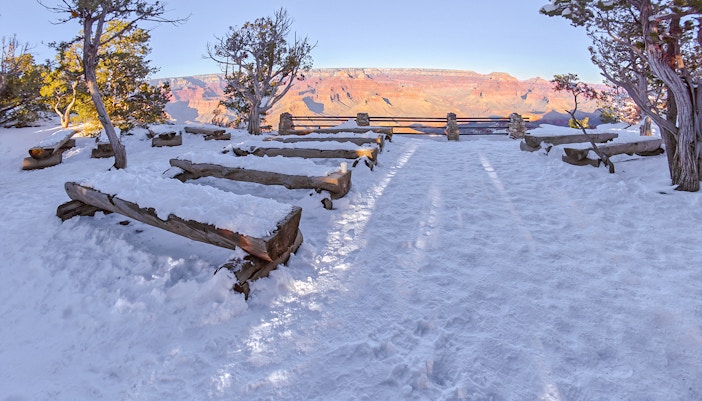
- North Rim
- History
- South Rim
- Facts
- West Rim
- Grand Canyon Railway
- Hualapai Tribe
- Grand Canyon National Park
- Wildlife
- Shoshone Point
- Yavapai Geology Museum
- Hermit's Rest
- Hopi House
- Plan Your Visit
- Timings
- Directions
- Entrances
- Restaurants
- Map
- Camping
- Grand Canyon Village
- Weather
- Photos
- Hiking
- Things to Do
- Viewpoints
- Shopping
- Itinerary
- Hotels
- Rim to Rim
- Grand Canyon South Rim Tours
- Grand Canyon Boat Tours
- Grand Canyon National Park Tours
- Grand Canyon North Rim Tours
- Grand Canyon Floor Landing Tours
- Grand Canyon Lake Mead Tours
- Las Vegas to Grand Canyon Helicopter Tours
- Grand Canyon Tours from Las Vegas
- Grand Canyon Airplane Tours
- Grand Canyon Helicopter Tours
- West Rim Skywalk
- Grand Canyon National Park Helicopter Tours
- Grand Canyon Hummer Tours
- Grand Canyon West Rim Helicopter Tours
- Grand Canyon Tours
- Grand Canyon West Rim Tours
- Helicopter Tour Operators
Yavapai Geology Museum | A closer look at the formation & geology of the Grand Canyon
About the Yavapai Geology Museum
Location
Address: #0, Grand Canyon Village, AZ 86023, United States; South Rim | Find on Maps
Timings: 8am to 7pm, daily
How to get there:
- Shuttle Bus: From the Grand Canyon Visitor Center, guests can take the Kaibab Rim (Orange) Route shuttle to reach the museum.
- Hike: Hikers can reach the museum via the Canyon Rim Trail, from either the Grand Canyon Visitor Center or Mather Point.
- Parking: The Yavapai Geology Museum has its own parking lot. Otherwise, you can park at the Visitor Center Plaza Parking Complex and take the shuttle to the museum.

Key Features
- Picture windows: The Yavapai Geology Museum is a great spot to get panoramic views of the majestic Grand Canyon. Situated on the edge of the rim, the view is vast and unobstructed. Plus, you can self-identify a number of rock formations using the annotated displays below the picture windows.
- Gift shop and bookstore: The museum has a bookstore run by the Grand Canyon Association, where you can pick up interesting literature on the area's geology and terrain maps. The gift shop also has souvenirs to take home, such as mugs, apparel, crafts, and others.
- Exhibits: The exhibits in the Yavapai Geology Museum mainly consist of models describing rock depositions in the canyon, the sedimentation processes in the different rims, the geological movement of the Colorado Plateau, and the carving of the river basin. There are also some great photographs, local artwork, a three-dimensional topographic relief map of the Grand Canyon, and interactive panels as well.
- Geology program: Every day at 11am, a ranger-led geology program is held at the museum gate for 30 mins. Here, they talk about the early days of the canyon, the conditions that led to its formation, the science behind its appearance, and much more.
Trail of Time | The world’s largest outdoor geoscience exhibit

Stretching between Yavapai Geology Museum and Maricopa Point, the Trail of Time is a paved trail that showcases the geologic timeline of the formation of the Grand Canyon. This outdoor exhibit starts near the museum and makes its way west, beginning with the youngest rocks in the Grand Canyon to the oldest as you get closer to Maricopa Point.
The Trail of Time is considered the largest geoscience exhibition in the world. For the most part, the 2.8-mile path is marked every one meter to signify the passing of a million years in order to show visitors the progress of geological time on a human scale. Along the way, there are rocks of various ages collected from the river. The trail utilizes viewing tubes, rocks on plinths, and wayside panels to help guests match the exhibited rocks to the age they belong to along the timeline. There are spring deposits of travertine and columns of basalt on display that portray the conditions under which the canyon was formed. It is a great visual aid to gain a better geological understanding of the surroundings.
Grand Canyon Conservancy

The official non-profit partner of the Grand Canyon National Park, the Grand Canyon Conservancy is responsible for operating a number of shops in the park and providing educational programs that showcase the rich heritage of the region. It also raises private funds for the upliftment and maintenance of the park. They have several programs under their purview — preservation and restoration of historic landmarks, informative guided tours and trail walks, natural conservation efforts, and so on.
Since 1932, the Conservancy (then known as Grand Canyon Natural History Association) has worked relentlessly in providing support to the Grand Canyon through research, restoration, funding, and educational outreach. Some of its most important projects have been the enhancement of the Bright Angel Trailhead, the restoration of the Kolb Studio, and the construction of the Mather Point Amphitheatre, among others. The Grand Canyon Conservancy also publishes books on the Grand Canyon, featuring original research on its history, environment, wildlife, tribal communities, and others.
Things to do nearby

Yavapai Point
One of the South Rim's most popular viewpoints, Yavapai Point is right next to Mather Point. It is well-known for its panoramic views of the canyon and the Colorado River, because it is the most northerly of the three main South Rim viewpoints and is the closest to the river. Apart from the immediate surroundings like the Bright Angel Canyon, Plateau Point, etc., visitors can even see the distant landscape near Desert View and Palisades of the Desert from here.
Location: Grand Canyon Village, AZ 86023, USA | Find on Maps

Yavapai Point Amphitheater
Walking distance from the Yavapai Geology Museum, the Yavapai Point Amphitheater is a great place to relax and take in the views of the Grand Canyon. Situated along the Rim Trail, the amphitheater has log benches and trees' shade. The edge of the rim is guarded by a railing with posts embedded with rock samples. Sometimes, park rangers hold geology programs here during the summer months.
Location: 3V4G+9R Grand Canyon Village, Arizona, USA | Find on Maps

Mather Point
Mather Point was named after Stephen Tyng Mather, the first director of the National Park Service. The view is expansive — on a clear day, the visibility from Mather Point is more than 30 miles to the east and more than 60 miles to the west. Tourists especially love the sunrise and sunset views from here. The Grand Canyon Visitor Center is nearby, so for some visitors, this viewpoint is the first stop when they start exploring the South Rim.
Location: Grand Canyon Village, AZ 86023, United States | Find on Maps
Book Grand Canyon tickets
Frequently asked questions about Yavapai Geology Museum
The Yavapai Geology Museum educates visitors about the geological wonders of the Grand Canyon. It’s home to the largest outdoor geoscience exhibit and hosts a variety of interactive and immersive displays for people of all ages.
Yes, the museum's viewing windows are absolutely safe for children because they are enclosed by glass.
Yes, the Kaibab Rim (Orange) Route shuttle bus is operational daily. It starts around 6am and runs until about an hour after sunset.
The best time to visit the Yavapai Geology Museum is during sunset hours because the view is spectacular, with the canyons reflecting the light of the fading sun.
While the entire museum is filled with interesting displays, the most popular with children are the topographical relief map, which looks like a miniature version of the Grand Canyon, as well as the Trail of Time exhibit.
The Yavapai Geology Museum is the most popular museum in Grand Canyon National Park, but several other museums and visitor information centers in the area—Grand Canyon Museum Collection, Verkamp's Visitor Center, North Rim Visitor Center, Hopi House, and others—can help guests gain a more holistic understanding of the canyon and its people.
Yes, the major section of the Trail of Time, from the Yavapai Geological Museum to Verkamp's Visitor Center, is paved and therefore accessible to those who use wheelchairs. There are also accessible displays along the way.


